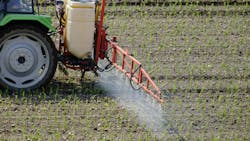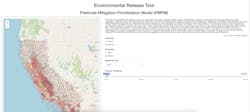App-based tool quantifies pesticide toxicity in watersheds
A new tool could help evaluate pesticide toxicity in watersheds at high resolution, according to a press release from the Public Library of Science (PLOS).
Pesticides are a leading source of chemical hazards in aquatic environments. A study published in PLOS Water by researchers at the University of California, Santa Barbara, introduces the new app-based tool, the Environmental Release Tool (ERT): Pesticide Mitigation Prioritization Model (PMPM).
The researchers also suggest that targeting a small number of pesticides in a few watersheds could significantly reduce aquatic toxicity in California’s agricultural centers.
They used ERT to analyze pesticide use across 140 California watersheds receiving agricultural pesticide applications. The ERT was able to quantify the toxicity released to aquatic taxa across these watershed areas, representing approximately 20% of the pesticide mass in the United States and covering hundreds of commodities.
The ERT demonstrated that mitigation actions on just two pesticides and sixteen site types would affect about 90% of applied toxicity to fish, aquatic invertebrates, nonvascular plants, and vascular plants in California’s agricultural landscapes. The study also showed that 20% of agricultural watersheds account for 80% of applied toxicity, suggesting that targeting a small number of watersheds receiving high concentrations of pesticides could be effective in reducing overall applied chemical toxicity.
The tool has some important limitations — for example, it does not predict risks to human health or watershed ecologies, only opportunities to decrease pesticide toxicity.



